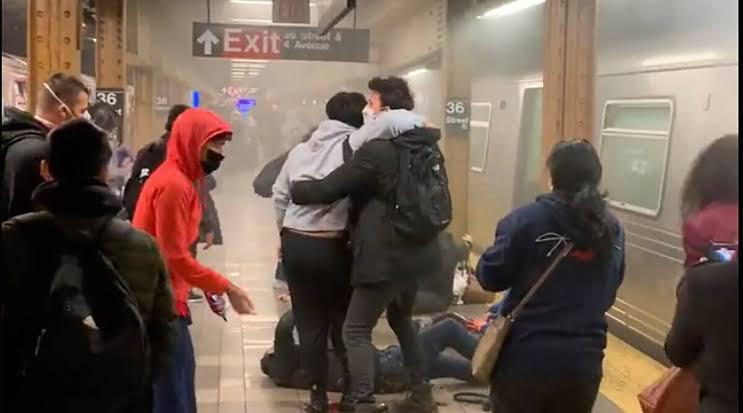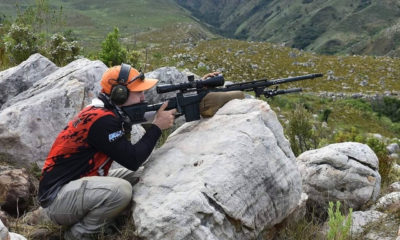
Banner

SA rabbi’s son escapes NYC shooting by hair’s breadth
When Johannesburg Rabbi Yossi Chaikin heard that there had been a shooting at a subway station in Brooklyn, New York, on Tuesday, 12 April, he went online to read about it.
“I assumed it would have been in Manhattan. When I saw it was in Sunset Park I went cold, as my son, Mendel Chaikin, used to work there, very near that train station,” he says.
“He has changed jobs, a bit further down the same subway line. He went a bit earlier than usual today [12 April] as he had a 09:00 appointment and didn’t want to be late. It turned out that his train went through 36th St Station [where the shooting occurred] literally minutes before it happened.”
Speaking to the SA Jewish Report from New York, the younger Chaikin says, “I occasionally ride through 36th St Station on my commute to work. This morning, by timing and chance, I was on a train moments before the shooting took place there. It wasn’t until I had started my day that I heard about what happened shortly after I passed through the station. The violence in a quiet subway station that I so often pass through shocked me. If I had delayed leaving to work by just a few moments, chances are I would have been there. It’s not so clear every day how Hashem watches over us!”
Mendel is a married father of seven and business consultant living in Crown Heights, a neighbourhood of Brooklyn. One in four people in Brooklyn are Jewish, so the attack was in an area with a large Jewish population. According to an article written in 2018, “there are more Jews right now in Brooklyn than anywhere else in the world, including the city of Tel Aviv”.
The elder Chaikin is the Oxford Shul rabbi and chairperson of the South African Rabbinical Association. For him, the minutes until he got hold of his son were excruciating. “I saw he had been online on WhatsApp a couple of minutes earlier. I messaged him and he responded. It was a huge relief.”
According to American media, several children were among the dozens who were injured during the major shooting incident, when the suspect fired at least 33 shots and used smoke grenades on the train. Juvenile victims, including a 12-year-old, were transported to Maimonides Hospital in varying conditions following the attack that injured 29 people. The children were reportedly on their way to school when the attack occurred, officials say. The suspect was still at large at the time of going to print.
“The city certainly entered a state of shock early on. I was in Union Square, the centre of Manhattan, heading to a work meeting and the entire system of the Broadway lines was simply cut off,” says Omer Rabin, an Israeli-born tech founder living in New York and former Jewish Agency shaliach to Cape Town.
“There were many rumours and a real state of panic as initially, the report was about a few unidentified/inactive bombs in the station, and people feared it was a multi-scene attack. This is a city that still has the trauma of 9/11, and so people are very worried, naturally. The fear of additional bombs was removed, and trains got back to work after an hour but with people still avoiding the subway given the information that the shooter is still roaming free, which is still true as far as I know.
“I got out of the train station and started walking to work, and spent the entire day travelling by foot without using the subway station. Many of my friends did the same.
“Especially within the Israeli community here in New York, the memories of what happened in Tel Aviv last week are very fresh,” says Rabin. “So there was a lot of texting the family and WhatsApping each other the entire day. Now, in the afternoon [of Tuesday, 12 April], it feels like the city is getting back to action, with trains running again and people out on the streets. But this is certainly the talk of the day, and people are still confused about the motive and asking what the city is going to do about it.”
Nikki Cohen is a freelance creative living in New York and is originally from Sydney, with family in Cape Town. “I’ve been to that station a lot, but I rarely use the subway anymore because I work from home and walk/bike so much,” she says. “Nonetheless it’s scary because the subway is the lifeline of the city. America has a mental health and gun crisis, yet the only way it knows how to ‘fix’ these problems is by increasing the police presence, which doesn’t really do anything.
“Continued funding of the police, which is what will result from this, is the absolute opposite way to prevent these things from happening,” she says. “It’s actually illegal to carry firearms in New York. I’m more scared for my safety in other states that are pro-gun. The gun isn’t the scary part of this, it’s the fact that someone mentally unhinged would do something like this, and that it happens pretty much on a daily basis in America.”
Two years ago, Joburg-born, Brooklyn-based musician and music therapist, Jon Samson, took home a Grammy for Best Children’s Music Album. Now, he had to mark himself as “safe” on Facebook as the attack hit close to home – literally.
“As I heard the news that a man released a gas canister before opening fire on a subway full of people on the N line just a few miles from my home in Brooklyn, my heart sank. Ramping up security measures and tightening gun regulations may help, but won’t get to the root of this predicament. We need to ask ourselves how these atrocities could ever be possible, and what they say about the systems we have in place.
“So many people are in chronic states of psychological and emotional stress, without adequate resources and opportunities to support even basic survival, let alone mental health,” he says. “While I hope it’s obvious I’m not excusing or even understanding the individual who executed this unthinkable crime, I do think it’s clear this sort of madness is part of a larger mental-health crisis of epidemic proportions.
“This is no time to judge New York for being violent or dismiss what happens in another part of the world we think has nothing to do with us,” says Samson. “As devastating as this atrocity is, it has served as another example of how resilient and united people can be. Instead of fleeing, even while gas remained in the air, the unharmed passengers remained to help those who were wounded. As grief-stricken and terrified as I am, I’m now also reminded of the resilience that we possess.”










